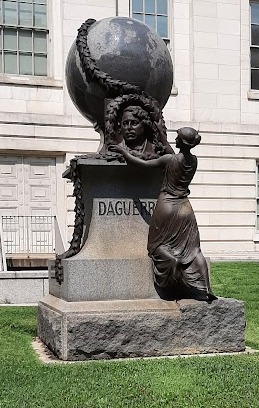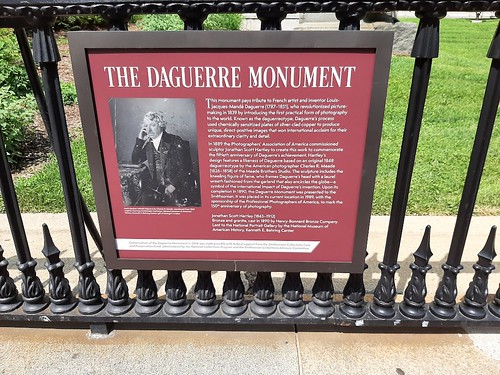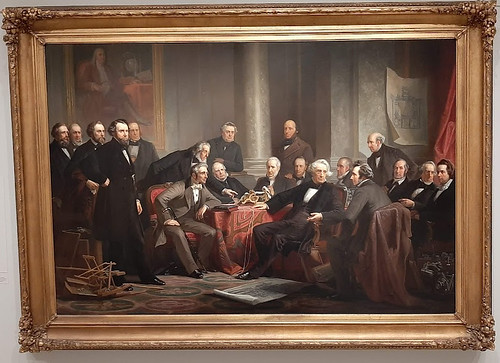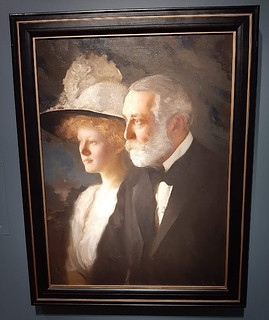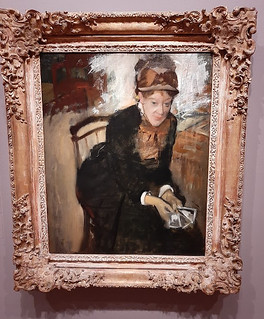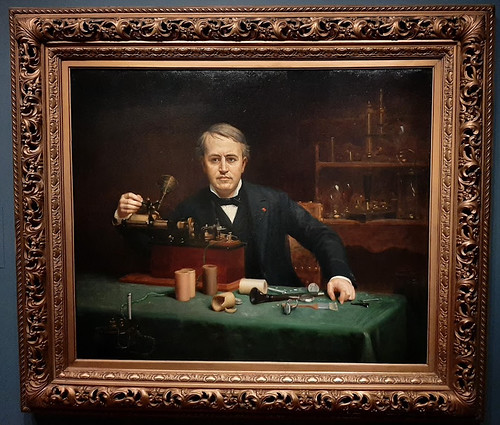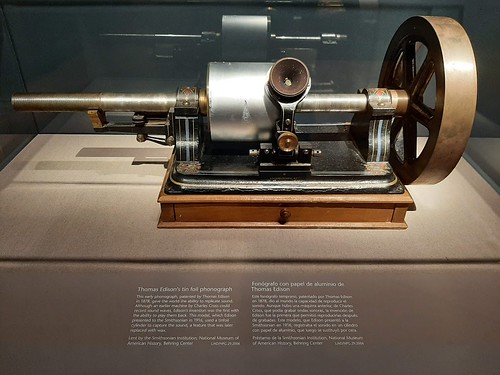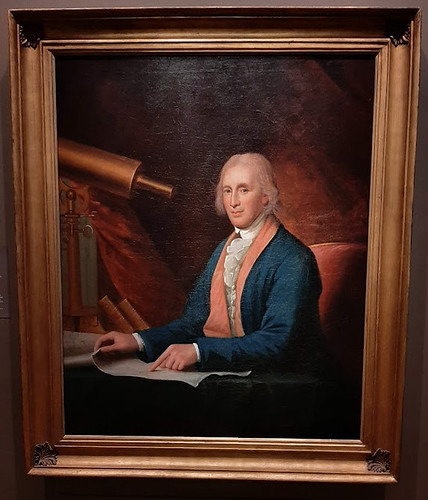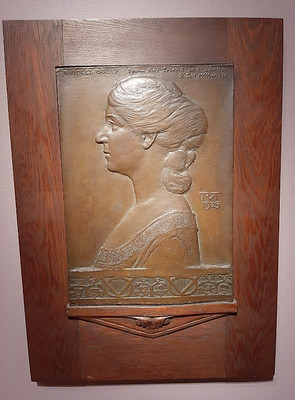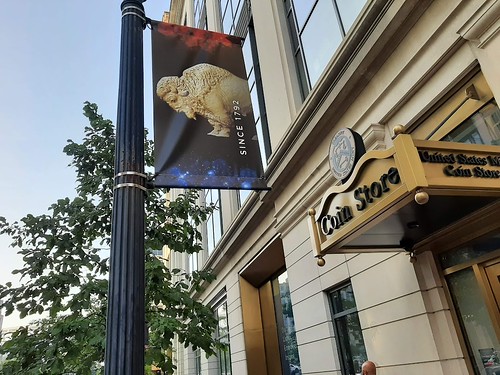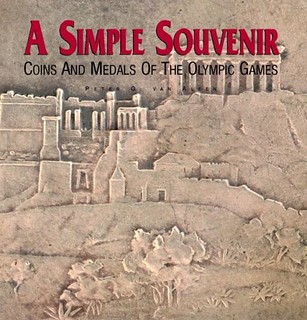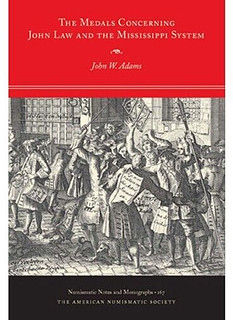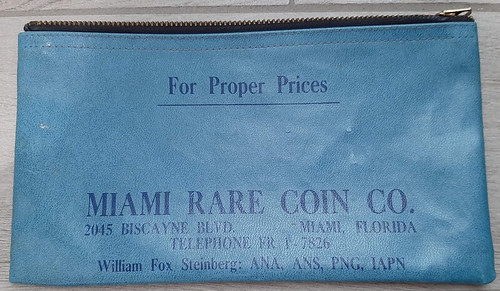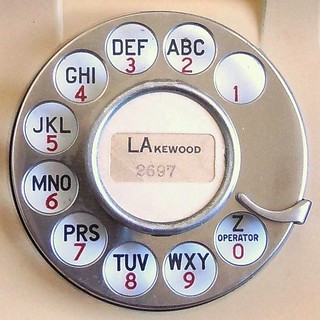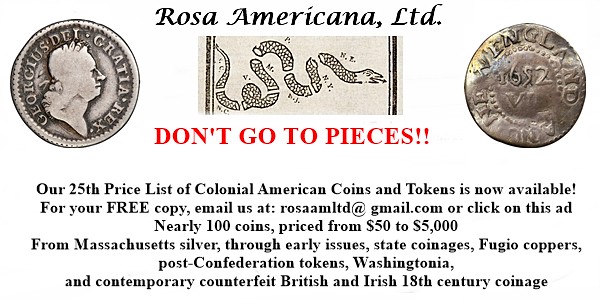
PREV ARTICLE
NEXT ARTICLE
FULL ISSUE
PREV FULL ISSUE
WAYNE'S NUMISMATIC DIARY: JULY 30, 2023For my work with the Newman Numismatic Portal I attended a conference by the Internet Archive at the Martin Luther King Jr. Library in Washington D.C. on Wednesday. It was a sweltering hot day and I had an hour to kill before the event began at Noon. Across the intersection was the National Portrait Gallery, housed in the old Patent Office building. Unfortunately it didn't open until 11:30, but I hung around and took a whirlwind tour of some first-floor exhibits. Here are some of the great exhibits I saw, several with connections to numismatics or my hometown of Pittsburgh, location of the upcoming ANA convention.
The Daguerre Monument
Men of Progress Fifth from the left is the connection to numismatics (and daguerrean photography in the U.S. - Joseph Saxton (1799-1873)). QUICK QUIZ: what can you tell us about Saxton?
In 1857, the inventor of a coal-burning stove, Jordan Mott, commissioned Christian Schussele to paint this group portrait of nineteen scientists and inventors of the United States who Men of Progress pays tribute to the remarkable growth of the U.S. economy by the 1850s.
For more information, see:
Henry and Helen Frick, Mary Cassatt The portrait on the right is Impressionist artist Mary Casssat, painted by Edgar Degas. Cassatt was born in Pittsburgh.
Thomas Edison
David Rittenhouse
Robert Tait MacKenzie Plaque
U.S. Mint Coin Store
New Coin Books
To read the earlier E-Sylum article, see:
Miami Rare Coin Co. Money Pouch Bob writes: "I believe my late father William "Foxy" Steinberg had these made sometime between 1955-1965 (as the company who made them became a corporation in 1965 and changed their name slightly), so it had to be made prior to 1965. I don't know how many my dad ordered but I would guess maybe 100 or so to give out to customers and dealers. Check out the old telephone number with the two letter prefix!" Most of our readers are too young to remember those prefixes, so here's a lesson from Wikipedia. The image is an old rotary dial showing the telephone number LA-2697, which includes the first two letters of Lakewood, New Jersey. To call the number people would dial 5-2-2-6-9-7 -Editor
Central offices were usually identified by names that were locally significant. The leading letters of a central office name were used as the leading components of the telephone number representation, so that each telephone number in the area was unique. These letters were mapped to the digits of the dial, which was indicated visibly on the dial's numbering plate. On the number card of the telephone instrument, the name was typically shown in full, but only the significant letters to be dialed were capitalized, while the rest of the name was shown in lower case.
For more background on telephone exchange names, see:
To read the earlier E-Sylum article, see:
Wayne Homren, Editor The Numismatic Bibliomania Society is a non-profit organization promoting numismatic literature. See our web site at coinbooks.org. To submit items for publication in The E-Sylum, write to the Editor at this address: whomren@gmail.com To subscribe go to: https://my.binhost.com/lists/listinfo/esylum All Rights Reserved. NBS Home Page Contact the NBS webmaster 
|
